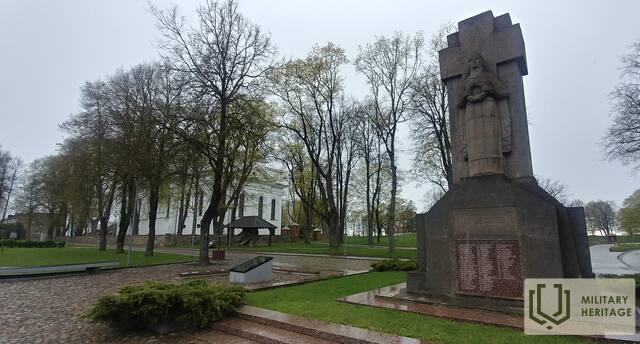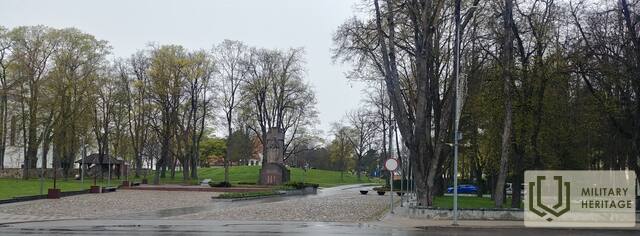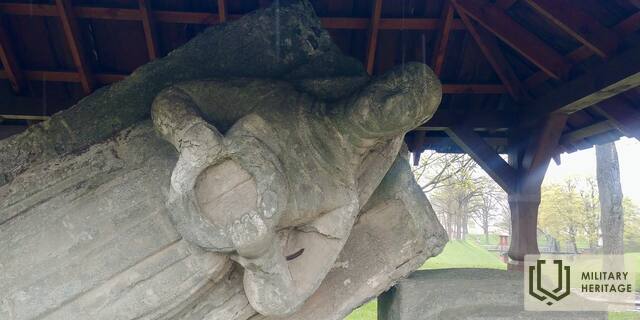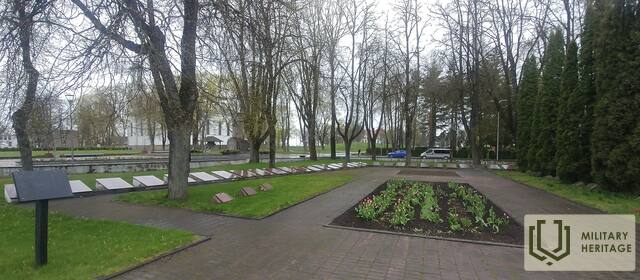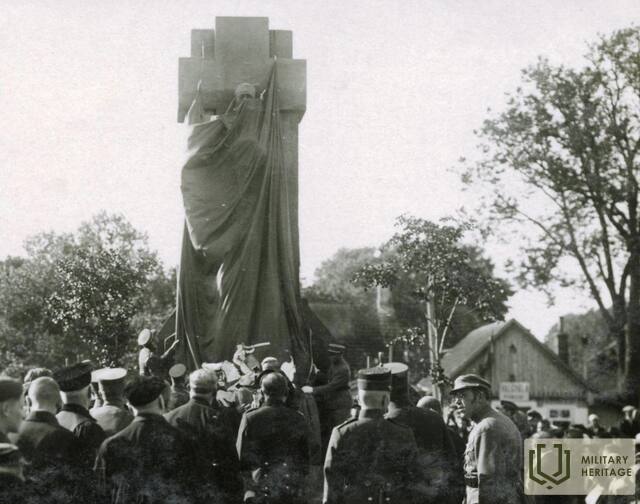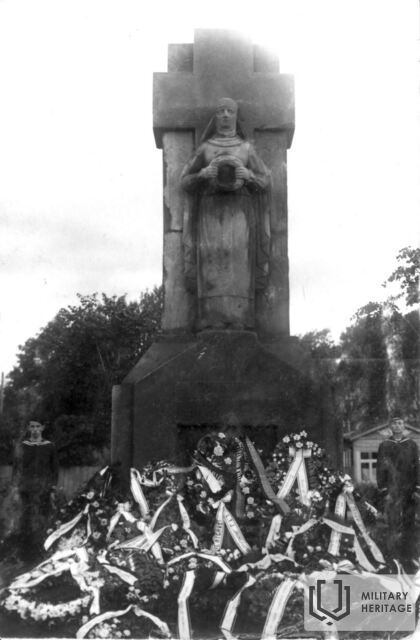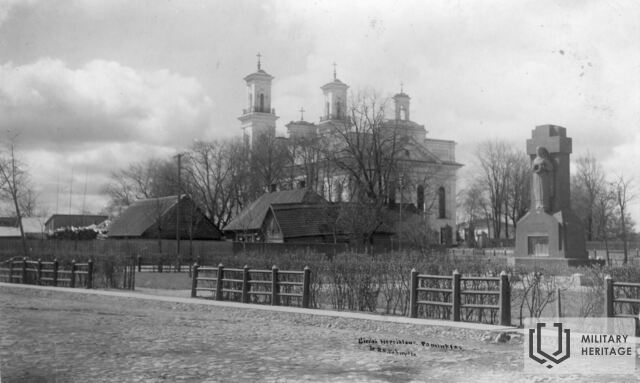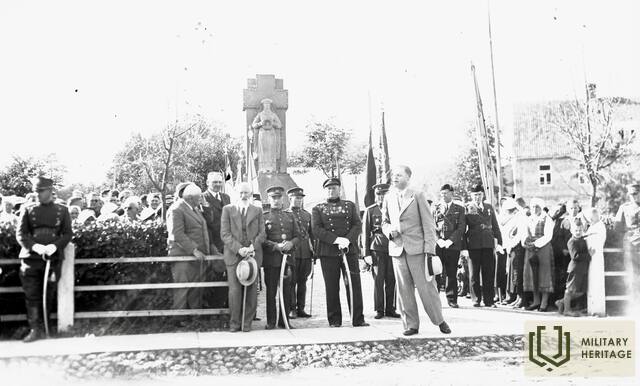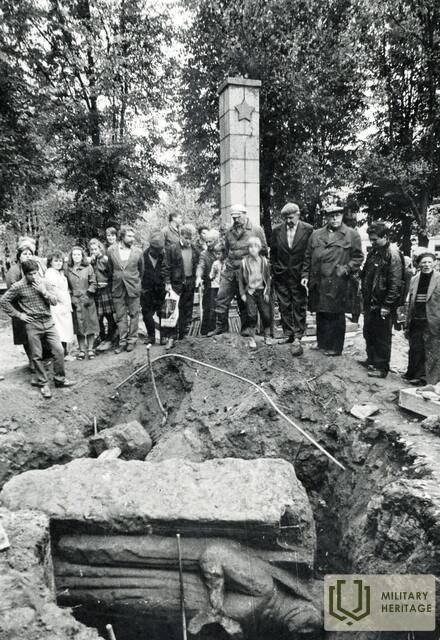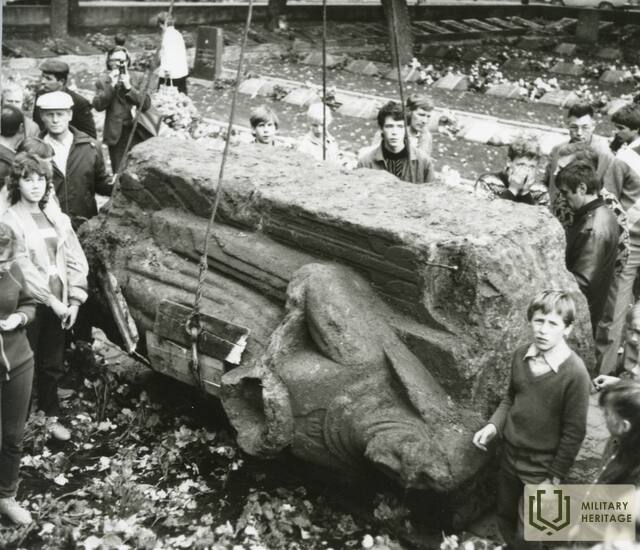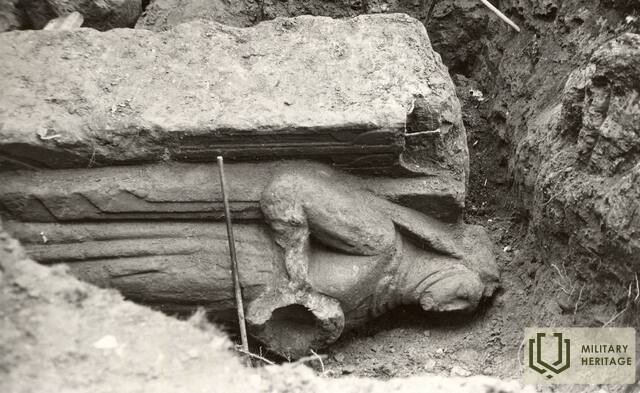Independence Square in Biržai Memorial site

In the center of Biržai city.
A place of remembrance of the battles for freedom and a witness to the memory wars.
In 1931, on the former square next to the Church of St. John the Baptist, a monument to those who died for the Independence of Lithuania was erected at the initiative of the local team of the Lithuanian Riflemen's Union. The square became known as Independence Square, and the people of Biržai called the monument itself "Birute" (in honor of the Grand Duchess of Lithuania). The square became a place for various celebrations and commemorations. Flowers were laid at the monument, and riflemen or scouts' oaths were taken. After the Soviets occupied Lithuania, the monument did not last long - in 1946 it was blown up and buried where it stood. A cemetery for Soviet soldiers was established on the site of the Independence Monument.
In 1988, the people of Biržai excavated the remains of the destroyed monument. And in 1990, an exact copy of this monument was restored, only it was no longer erected in its original place, but further away, next to the cemetery of Soviet soldiers. In 2006–2007, the monument was restored, and a plaque with the names of 60 Lithuanian volunteers, soldiers, partisans and riflemen who died was attached to its pedestal. In 2017, another memorial plaque was unveiled next to the monument - to the knights and volunteers of the Vytis Cross of the Biržai parish in the 1919–1920 Independence battles.
In 2011, original fragments of the original monument were brought and exhibited next to the church.
In 2005–2010, the square was reconstructed. It is believed that in the 16th–17th centuries, this place was supposed to be an empty field between the castle's defensive moat and the townspeople's plots. Later, the area was divided into plots. When reconstructing the square, it was intended to reflect these stories: narrow, diagonal marks resembling cannonball trajectories semantically connect the square with the castle, and the wider lanes crossing the square more or less correspond to the boundaries of the townspeople's plots that were here in later times.
In 2021, the square was officially renamed Independence Square. The square remains the burial place of Soviet soldiers from World War II, marked by an obelisk and memorial plaques. It is believed that soldiers and spies from the NKVD-MVD-MGB units who died in battles with partisans in the Biržai region in 1945–1954 were also buried here.
Used sources and references:
"Burial site of Soviet soldiers of World War II", in: Register of Cultural Properties, available online: https://kvr.kpd.lt/#/static-heritage-detail/742a6ed5-0143-42b2-9c9e-a6a0dc7a01b1 .
Juozas Banionis, “Biržai, Vytautas St. Monument to Those Who Died for Lithuanian Freedom”, in: Monuments of the Victims, Vilnius: Science and Encyclopedia Publishing House, 1994, pp. 19–20.
"Independence Square", in: Biržai Tourism and Business Information Center, available online: https://www.visitbirzai.lt/nepriklausomybes-aikste .
"Monument to those who died for the Independence of Lithuania", in: Register of Cultural Properties, available online: https://kvr.kpd.lt/#/static-heritage-detail/528395e1-4924-4d40-b5ce-2d45fd489542 .
Related stories
Monuments to Lithuanian Independence. Histories of monuments created by Roberts Antinis: (I) interwar period
Around 1928, a boom in the construction of monuments to commemorate the 10th anniversary of Independence and the battles for Independence began in Lithuania, testifying to the patriotic mood of Lithuanians and their civic spirit. In this case, it is worth highlighting the works of sculptor Roberts Antinis, created in 1926–1931.
Monuments to the Independence of Lithuania. Histories of Monuments Created by Roberts Antinis: (II) Soviet Period
Most of the monuments to Independence (related to Lithuanian statehood and the struggles for it) erected between the wars were destroyed during the Soviet era as ideologically dangerous or inappropriate. The occupiers destroyed not only people, but also memory and signs of memory. The monuments created by sculptor Roberts Antinis also suffered a similar fate.
Monuments to Lithuanian Independence. Histories of Monuments Created by Roberts Antinis: (III) Revival
One of the manifestations of the changing society during the Lithuanian Persistörkymo Sąjūdis era was the search and restoration of Independence monuments destroyed during the Soviet era, which began in 1988. Symbols of Independence, Freedom and Statehood once again appeared in Lithuanian cities and towns.




